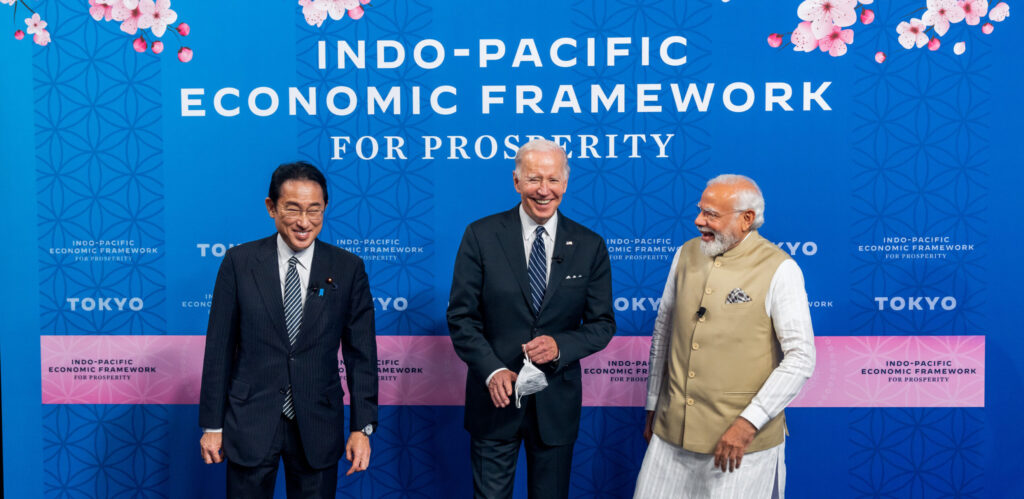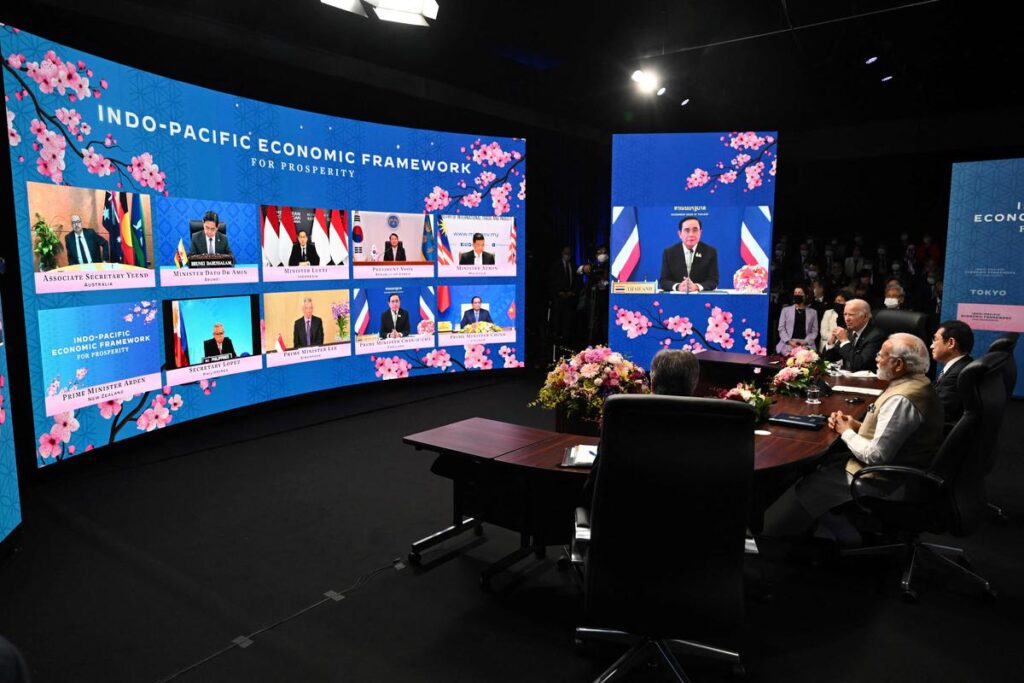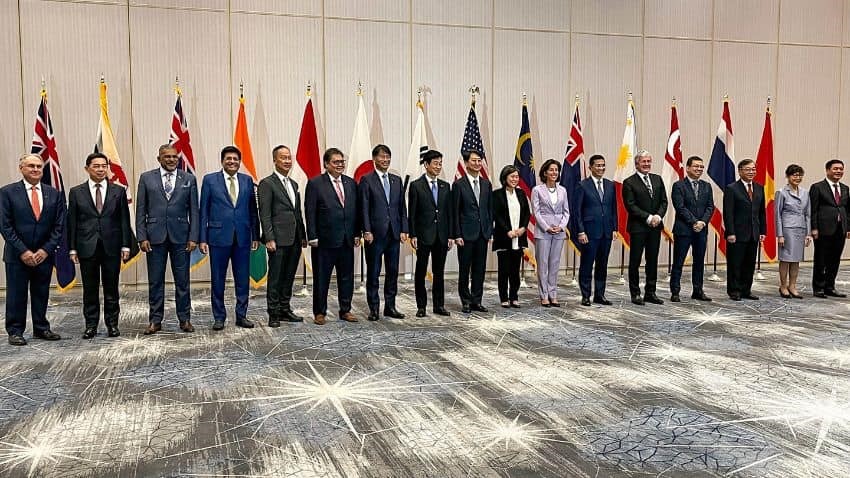Background
The Indo-Pacific Economic Framework is the unconventional US-led multilateral economic framework seeking partnership among 13 countries of the region, aimed at promoting economic cooperation and development. It was mentioned for the first time by US President Joe Biden at the October 2021 East Asia Summit and then was eventually launched on 23 May 2022, in Tokyo one day before the Quad summit. The United States has repeatedly emphasized that IPEF is not a usual free trade agreement like the RCEP (Regional Comprehensive Economic Partnership) based on market access and removal of tariffs, it is an advancement of the stance of the USA that their Indo-Pacific relations have significant economic aspects.
Donald Trump’s withdrawal from the TTP (Trans-Pacific Partnership) was a significant trigger leading to the formulation of the IPEF to assure the South East Asian countries that they are very much a part of the US’s geo-economic strategies and also serves the purpose of tackling the growing influence of the People’s Republic of China in the region. The region has the greatest potential of witnessing an economic boom in the coming decades which makes it lucrative to engage with it and diversify its international relations instead of confining it to the west which is more or less stagnating and has not witnessed significant growth since 1973 when the OPEC countries decided to raise the prices of oil by cutting its supply.

Opportunities
The 14 countries together represent 40% of the world’s GDP making it an important node in impacting and influencing the global economy which is undergoing turbulent times affected by the pandemic, the Russo-Ukraine war, inflation, rising oil prices and such endless issues. The framework is composed of four key pillars which the members would have to sign but it is not binding on them to participate in all of them. The four pillars are as follows:
– Connected Economy (Trade)- This pillar is based on the digital economy involving cross-border flows of data and data localization. The emphasis is on making use of the growing e-commerce and online sector for the development of small and medium-sized enterprises while addressing problems such as privacy and data breaches.
– Resilient Economy (Supply Chain)- This pointer is based on improving the efficiency of the supply chain and making it smoother to avoid disruptions that lead to inflation hurting the economies.
– Clean Economy (Decarbonization and Infrastructure)- To address the issues of sustainable development and climate change, commitments will be sought on energy efficiency and carbon emission reduction.
– Fair Economy (Anti-Corruption and Tax)- To promote fair competition among economies, efforts would be made to implement anti-corruption measures and anti-tax evasion measures efficiently.

India’s Position
On 9th September 2022, India attended the first in-person IPEF ministerial meeting in Los Angeles with the Minister of Commerce and Industry Shri Piyush Goyal representing the Indian case. The next day on 10th September 2022 India accepted to join three out of four pillars of the framework abstaining itself from a total agreement. India didn’t agree to join the connected economy pillar of the framework.
While India could see its interests being promoted in the other three pillars which align with its positions: be it the resilient economy which aligns with the National Logistics Policy of the country on a global scale, clean economy resonates with India’s efforts to promote sustainable development and fair economy resonates with the countries efforts to curb corruption and tax evasion. India put forward its stance that it is committed to promoting a transparent flow of goods and services between countries efficiently and development of infrastructure for advancing development but in a sustainable fashion.
The meeting and India’s position were summarised by Piyush Goyal in his statement at the press conference post the meeting: “Together this group of 14 countries of the IPEF will define the rules of trade among countries which believe in fair play, transparency, and rules-based trading in the future.” India’s abstention from a total agreement is believed to be a cautionary move as India is in the process of developing its own legal framework on data, privacy, cybersecurity and related issues which somewhat to an extent explain India’s withdrawal from the pillar based on data flow and the digital economy.

Conclusion
India joining the IPEF, although not in full capacity is a great positive side for the country because in the recent past, it has been observed that the country has been refraining from joining multilateral economic frameworks and has been aggressively promoting bilateral free trade agreements. This showcases a shift in India’s foreign and trade policy which hopefully is able to help us in achieving our dream of becoming a five trillion-dollar economy and global powerhouse in the near future.
Written by Arhaan Siddiqui
Edited by Roshan Kukreja
